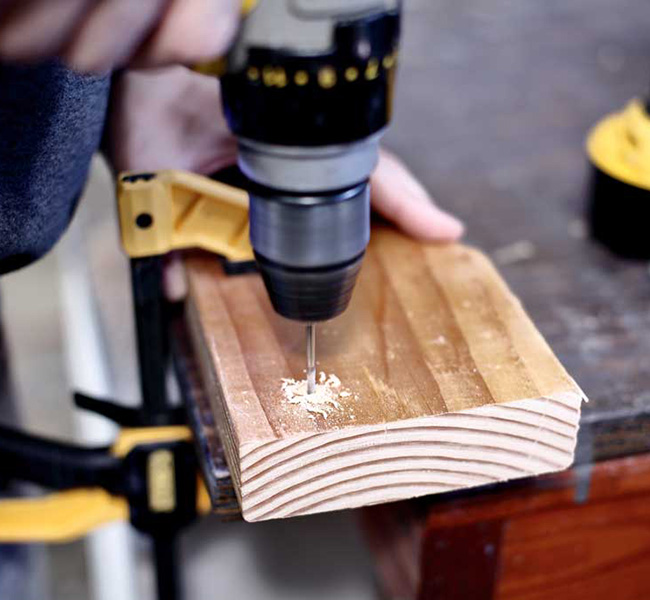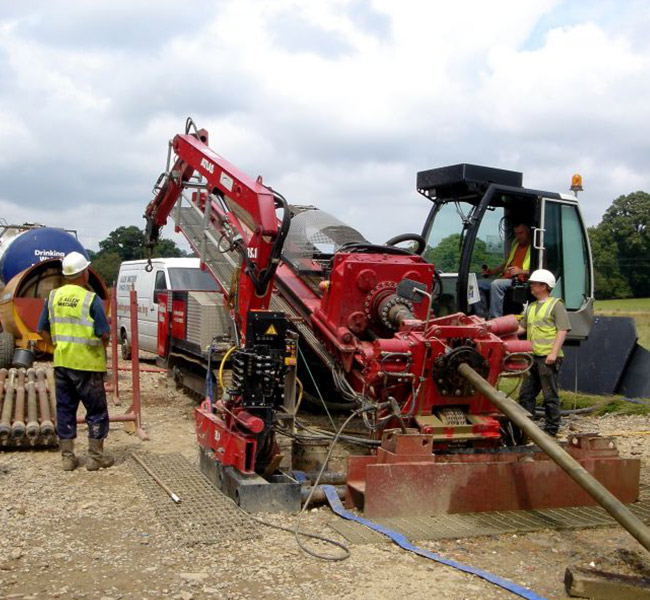HDD Rig
Power of Horizontal Directional Drilling
Horizontal Directional Drilling (HDD) Rig is a groundbreaking technology designed for trenchless pipeline installations. It has the potential to work in various geological conditions, from soft subsoils to solid rock, given the soil stability. HDD Rig accommodates varying borehole diameters, ranging from 0.2 to 2m (8-80").
Advantages of Horizontal Directional Drilling
The HDD Rig offers several unique benefits in the field of pipeline installations:
- It serves as an economical and environmentally considerate solution for laying pipelines.
- It has the capability to facilitate different borehole diameters with a single machine.
- It exhibits broad geological adaptability, suitable for working in both stable loose soil and hard rock conditions.
- There are five distinct rig types available, each designed for various applications.
- A comprehensive portfolio of equipment and services accompanies the rig, including high-pressure mud pumps, separation and mixing plants, pipe thrusters, tools, and training programs.
Broad Spectrum of Applications
HDD Rigs can be utilized to rapidly and cost-effectively install pipelines under rivers and infrastructure. These are perfect for numerous pipeline applications, including but not limited to the transport of oil and gas, wastewater, district heating, high-voltage lines, and telecommunications cable bundles.
Machine Data
| Co/Model | Thrust/Pulback (to) | Carriage speed (m/min) | Torque (kNm) | Spindle Speed (rpm) | Drill Pipe (m) | Engine (kW) | Weight (kg) |
|---|---|---|---|---|---|---|---|
| HK500-HT | 80 | 0-35 | 60 | 80 | 6 R1 | 328 | 30000¹ |
| HK80 | 100 | 0-35 | 60 | 80 | 6 R1 & 9,8 R2 | 328 | 31000¹ |
| HKIOO | 500 | 0-35 | 140 | 60 | 9,8 R2 | 940 | 45500² |
| HK150 | 500 | 0-35 | 180 | 60 | 9,8 R2 | 940 | 45500² |
| HK250 | 400 | 0-35 | 120 | 60 | 9,8 R2 | 940 | 45000² |
| HK250-HT | 400 | 0-35 | 140 | 60 | 9,8 R2 | 940 | 45000² |
| HK300 | 300 | 0-35 | 90 | 72 | 9,8 R2 | 470 | 30500² |
| HK300-HT | 300 | 0-35 | 120 | 60 | 9,8 R2 | 470 | 30500² |
| HK400 | 250 | 0-35 | 90 | 72 | 9,8 R2 | 470 | 29000² |
| HK400-HT | 250 | 0-35 | 120 | 60 | 9,8 R2 | 470 | 29000² |
| HK500 | 150 | 0-35 | 70 | 80 | 9,8 R2 | 328 | 25000² |
Working Mechanism of Horizontal Directional Drilling
The HDD Rig operates using the Horizontal Directional Drilling (HDD) method, which consists of three primary work steps:

Pilot Hole Drilling
This is the first step where a pilot hole is drilled from the starting point to the target point. The rotating drill pipe is guided accurately along the planned route by a measuring system directly behind the drill bit. During drilling, mud pumps deliver a bentonite suspension to the nozzles mounted in the drill bit.
Pilot Bore Expansion
After the pilot hole drilling, the pilot borehole is expanded. The pilot drilling assembly, including the surveying system, is dismantled and replaced by a scraper. The expansion generally occurs in several steps until the final borehole diameter, about 30 to 50 percent larger than the pipeline diameter, is achieved.


Pipeline Pull-in
The pipeline, which is prefabricated, is connected to the drill string. The pipeline is then pulled into the final position with the assistance of Bentonite, which reduces the friction between the pipe jacket and the ground.
Operational Breakdown of Horizontal Directional Drilling
The HDD Rig works in an efficient and systematic manner to deliver effective pipeline installations:
During pilot drilling, the drill bit removes soil, and then a reamer widens the borehole.
The rig uses hydraulic support with bentonite suspension.
The transport of overburden is performed hydraulically through the annular space using bentonite suspension.
The drill carriage pushes forward the rotating rods and pulls them back during the expansion phase.
The final step involves the pipeline installation process.
The HDD Rig is an innovation in pipeline installation, offering an efficient, reliable, and cost-effective solution for varying geological conditions and project demands.
